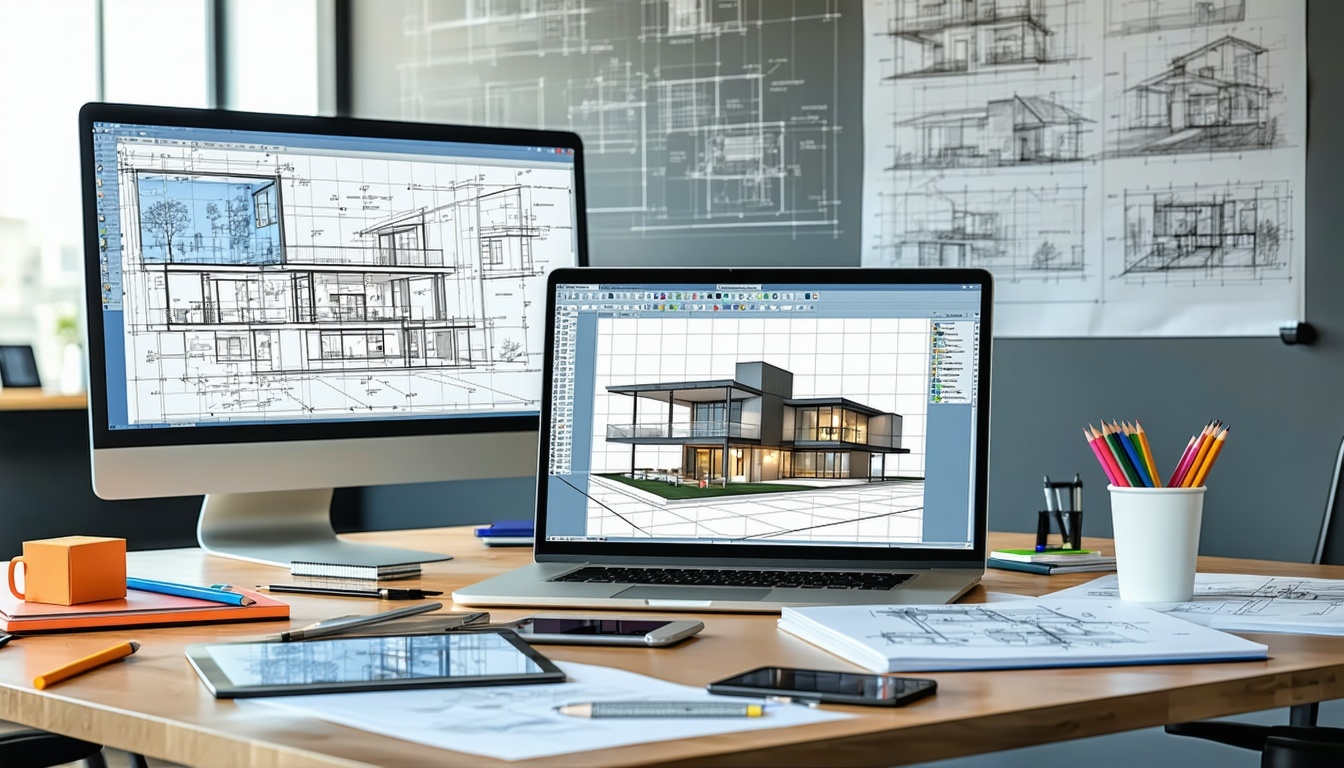.png)
Ar. Shubham Singh is a BIM Architect who completed his B.Arch from GGSIPU, New Delhi. He’s currently working with Novatr, and has been involved in projects for IKEA GMP, NMP. His work reflects expertise in BIM software and automation tools. You can learn more about his work and connect with him on LinkedIn.
The future of Building Information Modelling (BIM) beyond Revit promises to transform architectural workflows for the better. With a growing focus on intelligent, collaborative, and data-driven processes, architects must now develop the skills required for advanced BIM software proficiency. Emerging technologies such as AI, cloud-based platforms, digital twins, and automation are reshaping design, construction, and project management. As BIM expands into sustainability analysis, generative design, and smart city planning, architects need to adapt by mastering these tools and standards, including ISO 19650. Upskilling in these areas will enable architects to deliver efficient, sustainable, and innovative projects while thriving in a rapidly evolving AEC industry landscape.
Emerging Trends in BIM Beyond Revit
Emerging trends in BIM go well beyond Revit, with new software and platforms reshaping architectural workflows. Cloud-based, AI-powered tools like Snaptrude and Vectorworks Architect help with real-time collaboration, rapid design iteration, and seamless integration of automation and computational design, enhancing efficiency and creativity in projects.
Architects should also watch for tools such as Autodesk Forma, Speckle, Hypar, and TestFit. These cloud-native and generative tools represent the next phase of BIM, focusing on analysis, iteration, and automation rather than just modelling. Forma integrates environmental and urban data; Speckle enables open data exchange; Hypar automates concept generation; and TestFit revolutionises feasibility modelling.
Technologies changing architectural projects are They’re moving BIM from being a documentation tool to a decision-making platform. Instead of drawing and correcting, architects are now simulating and optimising. AI and data-driven design reduce rework, enable real-time collaboration, and facilitate earlier stakeholder involvement, leading to faster, smarter design cycles.
Core Skills Architects Must Develop
In today’s landscape, architects need to develop skills such as advanced modeling, parametric design, and interdisciplinary coordination to thrive. These skills allow the creation
of flexible, yet complex designs that can be adapted easily if needed to be changed. Moving on to data management and collaboration across multiple disciplines, such skills serve as the cornerstone for modern architects. Organising data ensures accurate, accessible, and streamlined project coordination.
Architects can start by strengthening their Revit and coordination foundation, then branch into automation (Dynamo or Grasshopper). Once comfortable, they can focus on data workflows, Speckle, Power BI, or Python scripting. The key is to build layer by layer: understand, automate, then innovate.
A few skills that are becoming essential for architects to stay competitive are:
-
Computational design and visual scripting (Dynamo, Grasshopper).
-
Data management and interoperability (Speckle, IFC workflows).
-
Sustainability and performance simulation (Forma, Insight).
-
Automation and workflow optimisation.
-
Communication and collaboration across digital platforms
Also Read: Top Skills & Training to Become an Architectural Designer
Challenges in Adopting Future BIM Skills
Adapting to rapid software development can be challenging, as architects must continually learn new features and tools to stay ahead of the competition. This change requires a persistent willingness to learn and adaptability. A common challenge is that many professionals resist altering traditional workflows they are comfortable with, fearing that new technology will add complexity. Overcoming this resistance needs strong leadership, clear benefits, and targeted skill-building for smoother transitions.
Some common hurdles that architects face when learning new BIM tools are:
-
Time constraints due to tight deadlines.
-
Limited mentorship on emerging tools.
-
Overreliance on outdated workflows.
-
Fragmented learning paths make it hard to connect one tool to another.
To overcome these challenges, architects can:
-
Learn by doing: Apply new tools to small, real-world problems.
-
Stay plugged into communities: Platforms like Speckle or Hypar have active open-source forums.
-
Invest in guided learning: Structured upskilling programs provide direction and accountability.
-
Champion internal pilot projects: Start small, automate one workflow, share the outcome, and scale it across the team.
Career Impact of Future-Facing BIM Skills
Having future-facing BIM skills opens doors to advanced projects where you can take on leadership roles, managing complex workflows and working cross-functionally. These skills set you apart in a crowded job market, making you a preferred candidate for firms seeking architects who can deliver smarter, faster, and more efficient project outcomes.
These skills position you as a “BIM Strategist” rather than a “BIM Operator.” By mastering automation, interoperability, and performance analytics, you become the professional who drives innovation and efficiency. These traits naturally lead to leadership and consulting roles.
Finally, we wouldn’t wrap this up without guidance on how to make your mark in the AEC industry. Hence, we bring you Novatr expert advice:
-
Stay curious: Learn a new workflow every quarter.
-
Diversify: Don’t get locked into one software, focus on capabilities like automation or analysis.
-
Build visibility: Document and share your learning online.
-
Lead with value: When you propose new tools, connect them to time, cost, or quality improvements.
Conclusion
In conclusion, BIM is no longer just software, but a transformative force that is reshaping architecture and construction through enhanced collaboration, increased efficiency, and improved sustainability. As BIM evolves beyond Revit, the need to develop advanced skills in digital collaboration is essential for architects. Moreover, project management and emerging technologies like AI and digital twins are enhancing decision-making, cost savings, and innovative, sustainable design solutions. Adopting BIM skills as a whole prepares architects to meet future industry demands and deliver higher-quality projects, making it an essential skill to have for career growth and industry leadership in the coming years. The future of BIM promises smarter, integrated workflows that drive the evolution of the AEC industry.
Reading about the future of BIM beyond Revit and what you can expect from the AEC industry changing is one thing, but acting upon it is a whole different story. Hence, if you wish to join the upskilling route, Novatr’s BIM Course for Architects can be a good place to start. The course offers you the opportunity to learn in-depth about computational design processes, tools, and workflows.
Was this content helpful to you







